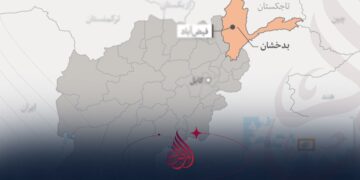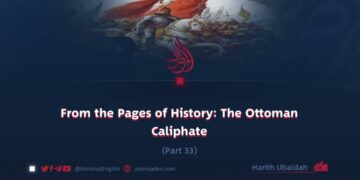Part 15
Author: Harith Ubaidah
The Strategic Vision and Triumphs of Sultan Orhan and Sultan Murad I
The remarkable expansion of the Ottoman Empire under Sultan Orhan was the result of a confluence of key factors. Building upon the foundational efforts of his father, Osman Ghazi, Orhan skillfully capitalized on both material and spiritual resources available to him. These advantages enabled him to extend Ottoman dominance across Anatolia and firmly establish the emerging state’s presence. Orhan’s unwavering resolve and strategic foresight made his empire-building efforts both continuous and decisive.
At that time, the Christian powers remained unaware that this nascent Islamic empire was steadily advancing toward Europe. Their realization only came when Muslim forces crossed the Dardanelles and seized the city of Gallipoli—a moment that marked the beginning of Ottoman territorial expansion into the European continent.
Meanwhile, the Byzantine Empire was already in terminal decline. Political instability, coupled with religious fragmentation and social disintegration, rendered Byzantine society vulnerable to external conquest. This weakness made the annexation of its territories by the Ottomans significantly easier. Additionally, the unity within the Ottoman military—particularly its ideological and religious coherence, with all troops adhering to the Sunni creed—was a defining strength that fortified their campaigns.
Compounding the Byzantines’ vulnerabilities was the deep mistrust among neighboring Christian states. The Bulgarians, Serbians, and Hungarians were unable to forge a meaningful political or military alliance to resist the Ottoman advance. Religious disputes between Rome and Constantinople, and internecine conflicts among Catholic factions, sowed further division and animosity among the Christian ranks. These disunities played directly into the hands of the Ottomans, allowing them to advance with comparatively little resistance.
The Ottoman military structure, rooted in ideological clarity and guided by prominent leaders, was both disciplined and innovative. Its command was entrusted to experienced and principled figures who ensured its cohesion and direction.
Sultan Murad I: The Mujahid King
Among the illustrious successors of Orhan was his son, Sultan Murad I—a devout, courageous mujahid and a just ruler. Known for his love of order, compassion for the poor, and dedication to jihad in the path of Allah, Murad maintained close ties with scholars, religious institutions, and his soldiers. His inner circle consisted of commanders and officers who formed part of his advisory council, from whom he regularly sought counsel.
Under Murad’s leadership, the Ottoman Empire expanded further into both Asia Minor and Europe. In 762 AH / 1360 CE, he captured Adrianople (Edirne)—a major city in the Balkans and second only to Constantinople within the Byzantine realm. By 786 AH / 1366 CE, Edirne was declared the capital of the Ottoman Empire, transferring the seat of power from Asia to Europe and firmly establishing it as an Islamic capital.
Murad’s Strategic Motives for Transferring the Capital
– Murad’s decision to relocate the capital to Adrianople was not merely symbolic—it was strategic:
– To benefit from the city’s military strength and proximity to active jihad frontlines.
– To integrate the recently conquered European territories more directly into the Ottoman administrative and military structure.
Murad reorganized the empire’s governance by consolidating power through centralized institutions. He established the roles of the sultanate, judiciary, religious scholars, legal codes, and administrative assemblies. Judges were appointed to courts, military bases were founded for the defense of cities, and madrasas and religious institutions were developed. Adrianople’s political, cultural, and religious prominence remained intact until 857 AH / 1453 CE, when Constantinople was finally conquered and became the new imperial capital.
The Crusader Coalition and the Battle of Maritsa
As Sultan Murad pressed forward with his jihad and missionary efforts, one European territory after another fell under Ottoman control. His success stirred considerable anxiety among Christian powers. When he advanced toward Macedonia, a broad Balkan Crusader alliance was forged to counter him. This coalition—comprising Serbs, Bulgarians, Hungarians, and others—mustered an army of 60,000 soldiers.
Despite being outnumbered, Ottoman commander Lala Shahin boldly confronted the Crusader force with a smaller army. The two sides met near the Maritsa River (also known as Tchirmen or Chernomen), where a decisive battle took place. The Ottomans delivered a crushing defeat to the Crusader alliance. The Serbian leadership and the Maritsa forces were routed, and the cohesion of the Christian military alliance collapsed under Ottoman pressure.
News of the defeat left the Hungarian leadership stunned. At that time, Sultan Murad—who had previously served as a revenue officer—had already conquered several regions. Following each conquest, he would return to the imperial center to establish orderly governance in the newly acquired territories, adhering to a consistent pattern of administrative consolidation.
Key Outcomes of the Battle of Maritsa
This victory at the Maritsa River produced several critical results:
1. Thrace and Macedonia were brought under Ottoman control, and Muslim forces advanced into southern Bulgaria and eastern Serbia.
2. The Byzantine, Bulgarian, and Serbian territories, unable to resist further, collapsed like withered autumn leaves and came under Muslim rule.



















































